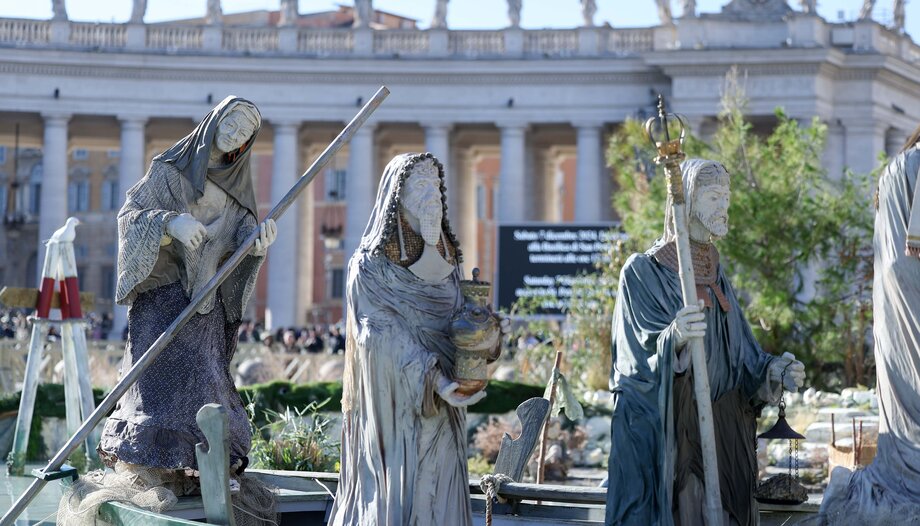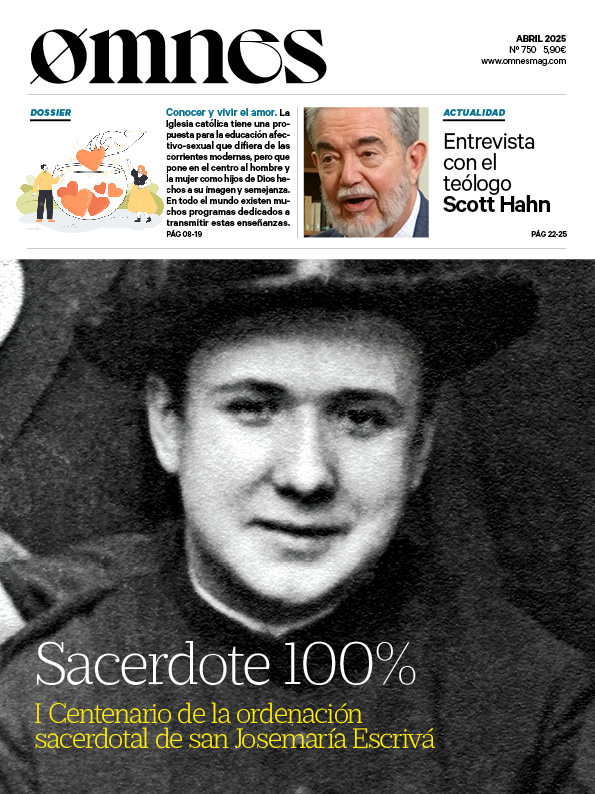On the day of the Immaculate Conception, while Pope Francis paid his traditional homage with an act of veneration to the statue of the Virgin Mary on the Spanish Steps, under the Bernini colonnade in St. Peter's Square the lights of the more than "100 cribs of the Vatican", which are part of the exhibition of the same name that will remain on display throughout Christmas, were turned on. An event already consolidated, which is now in its seventh edition and this year is charged with added significance given the proximity of the imminent opening of the Holy Door for the Jubilee of 2025.
The inauguration was presided over by Msgr. Rino Fisichella, Pro Prefect of the Dicastery for Evangelization and responsible for the organization of the Jubilee itself, together with representatives of the Dicastery and the Municipality of Rome, which is collaborating in the exhibition. Musical performances by a choir from the French Chateaubriand School of Rome and the music band of the Vatican Gendarmerie Corps enriched the ceremony.
A kaleidoscope of colors and traditions
This year's exhibition presents 125 nativity scenes from various European countries and from all over the world, from France to PolandThe Holy See has also been represented by a number of Latin American nations, from Hungary to the United States, and even Taiwan, often represented by their respective embassies to the Holy See.
The works on display clearly reflect the inspiration and imagination of the artists, and are made with a wide variety of materials, such as Japanese paper, silk, resin, polystyrene, wool, coconut fiber and glass. Among the most significant compositions is the so-called "Jubilee Boat", created by a Florentine association, which symbolically recalls the logo of the Holy Year itself.
No less impressive - according to the organizers themselves - is the nativity scene at St. Mary's Cathedral in Osaka, made with typically Japanese materials such as silk kimonos and tatami mats, a symbol of the importance of intercultural dialogue. Also significant are the nativity scene from the Sanctuary of Christ the Redeemer in Rio de Janeiro, built with natural coconut and banana fibers, and a Neapolitan-style Nativity scene made of wood and bark by a group of blind people from the province of Caserta, a testimony of how nativity scenes are a universal language that has the ability to tell the story of Christ's birth through the specificities of each people or human condition.
Symbol of evangelization
Over the years, the initiative has acquired a growing importance, not only artistic, but also pastoral and cultural, consolidating itself as an appointment awaited and frequented by believers, families and visitors from all over the world. As Archbishop Rino Fisichella, Pro Prefect of the Dicastery for Evangelization, pointed out on several occasions when referring to the Nativity Scene, "everything here speaks to us of hope. And it invites us to consider our present in order to build our future".
These words echo those with which Pope Francis opens his Apostolic Letter dedicated precisely to the value and meaning of the Nativity Scene, "Admirabile signum" of 2019: "As we contemplate the Christmas scene, we are invited to set out on a spiritual journey, drawn by the humility of the One who became man to go out to meet every man."
The exhibition will remain open from December 8, 2024 to January 6, 2025, with free admission.









